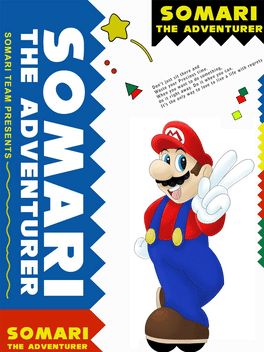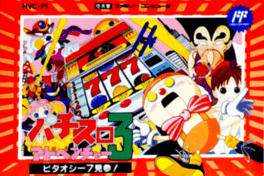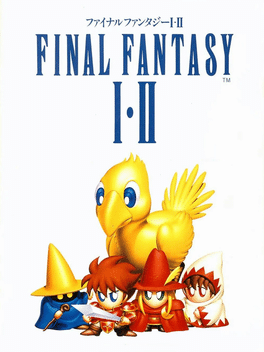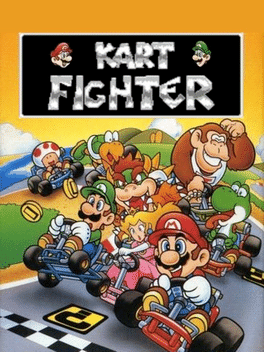New Famicom Games - Page 12
-
Huang Di: Zhuo Lu Zhi Zhan
1994
You control Huang Di, the Yellow Emperor, as he battles the evil forces of Chi You. According to the Chinese mythology, Chi You, with the giants, Jiuli tribes and evil spirits, rebelled against the Yellow Emperor at Zhuolu plains. Both sides used magical powers, but Chi You had the advantage of forged swords and halberds. Using his powers, Chi You covered the battlefield in thick fog. Only with the help of a magical south pointing chariot could the Yellow Emperor’s troops find their way through the mist. -
World Heroes 2
1994
-
Castle of Dracula
1994
Castle of Dracula
1994
Castle of Dracula is a puzzle game, developed and released by Yun Sung in 1994. -
Mortal Kombat II
1994
Mortal Kombat II
1994
Mortal Kombat II is a pirated port of Mortal Kombat made by Cony Soft (known as Yoko Soft in this game) in 1994. This should not be mistaken for Mortal Kombat II (Hummer Team). -
Dragon Ball Z: Super Butouden 2
1994
Dragon Ball Z: Super Butouden 2 is a port of the SNES game of the same name, made by Hummer Team sometime during the 90s. This is one of many pirated fighting games on the Famicom to use the Street Fighter II Engine. Unlike most Hummer Team games, it is in full Japanese as opposed to English. The story was completely removed from this version. However, the Arcade, Versus and CPU vs CPU modes are present. The characters are fought in a random order, and are always fought on certain stages. The graphics and music are taken from the original game and simplified, with some characters sharing stages. Many of the stages themselves use multi-layered scrolling. The forest stage's theme, which is Bojack's theme from the original game, was reused in Tekken 2, another game by Hummer Team. The ending is taken from the original game, albeit without the credits. -
Super Contra X
1994
Super Contra X
1994
Super Contra X is a pirate based off the Contra series, created by Chengdu Tai Jing Da Dong Computer Co sometime in the 1990's (likely in 1994). -
Somari
1994
Somari
1994
Somari is a side-scrolling platform video game, originally released in 1994 for the Famicom. An unlicensed port of Sega's 1991 Sega Genesis game Sonic the Hedgehog, the game was sold primarily around Asia, Russia, and other regions where pirate NES cartridges were distributed. Like the original, players venture to defeat the mad scientist Doctor Robotnik, who plots to turn the animal population of the fictional South Island into evil robots. Unlike the original, the game features Nintendo's mascot Mario as the main character rather than Sonic. The title is a portmanteau of "Sonic" and "Mario". -
Mortal Kombat II
1994
Mortal Kombat II
1994
Mortal Kombat II is an unlicensed port of Mortal Kombat made by Hummer Team. Both Kart Fighter and AV Bishoujo Senshi Girl Fighting, which were released later, use an earlier version of this game's engine. Despite the title, this game is actually a port of the first Mortal Kombat. This was likely done as a form of selling the product as a sequel, a common trait with unlicensed NES games. While the game is mostly faithful to the original game graphics-wise, some features were cut from the game. These include fatalities and blood which are found only in Mortal Kombat II Special. Also Goro is the same size as the other characters, probably due to the NES's limitations. -
Metal Force
1994
-
Takahashi Meijin no Bouken-jima IV
1994
star 6Fourth and final 8-bit installment of the series, only released in Japan on the Famicom system. Took the game from being a straight-on platformer and added some adventuring and RPG elements to the mix. -
Pachi-Slot Adventure 3: Bitaoshii 7 Kenzan!
1994
Pachi-Slot Adventure 3: Bitaoshii 7 Kenzan! is a Miscellaneous game, developed by Aisystem Tokyo and published by Coconuts Japan, which was released in Japan in 1994. -
J.League Super Top Players
1994
The game itself is interesting, with ten teams to choose from, and multiple game modes including an actual tournament or penalty kick practicing. For the PK Battle modes, each player must select a different team. He must then scan a player card (not a team card), and then that player will have a chance to kick a penalty kick (if it is his turn). For all other modes, the player must scan a team card and that will be the team that he will play as for the game(s). The main mode of play is the J.LEAGUE mode, of course. It is set up in a season/tournament setting, with 18 games per team. There are ten teams total in this version of J.League, and they are randomly sorted to play against a different team each day. The games are split into two periods with three minutes (3:00) apiece. Prior to starting a game, the player can choose the formation of his eleven active players, from one of three layouts that he can see on the small screen (4-4-2, 4-3-3, or 3-5-2). -
Q-Boy
1994
Q-Boy
1994
Q-Boy is an unlicensed platform video game developed and published by Thin Chen Enterprise/Sachen, released for the Family Computer in March 5 1994. Not to be confused with the Famiclone game console of the same title. -
Final Fantasy I & II
1994
Final Fantasy I & II
1994
Final Fantasy I & II is a compilation of the first two Final Fantasy games, released in Japan only for the Nintendo Famicom. Both games are almost identical to their original counterpart, although some of the changes from the English release of Final Fantasy were kept. This limited edition box also contains a handbook and maps for both games. -
Jurassic Boy 2
1994
Jurassic Boy 2
1994
In the year 2193, '"Dinosaur" becomes a popular subject again. Scientists all work for making dinosaur revive. 'Nevertheless, they still lack of a special gene. This causes the dinosaurs they cultivate are all incomplete. 'Many countries then intend to buy dinosaurian fossil at high prices in order to get the gene. 'But it seems that it's not so easy. 'No one can do anything to this problem until Dr. Crachi invents a "Time Space" machine in the year 2197. -
Kart Fighter
1994
Kart Fighter
1994
Kart Fighter is an unlicensed 2D fighting game produced for the Nintendo Famicom. The game features unauthorized appearances by Nintendo's mascot Mario and the rest of the cast of Super Mario Kart in a port of Street Fighter II. -
Nakayoshi to Issho
1994
Nakayoshi to Issho
1994
Nakayoshi to Issho is an Adventure game, published by Yutaka, which was released in Japan in 1993. -
Keroppi to Keroriinu no Splash Bomb!
1994
Keroppi to Keroriinu no Splash Bomb! is an Action game, developed by Geo Factory and published by Character Soft, which was released in Japan in 1993. -
Shooter
1993
-
Snake Charmer
1993

















